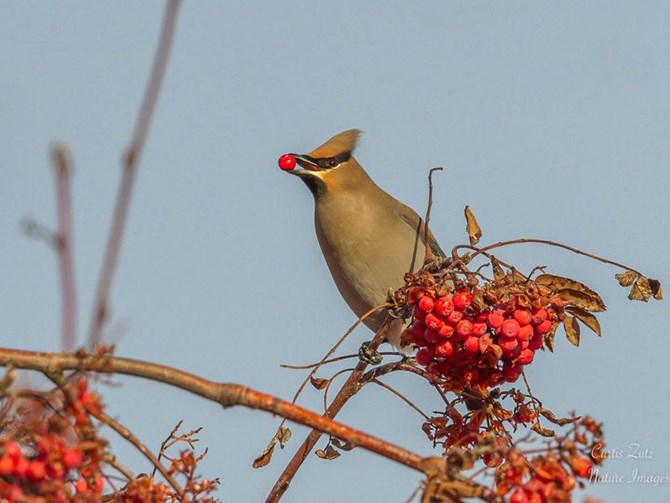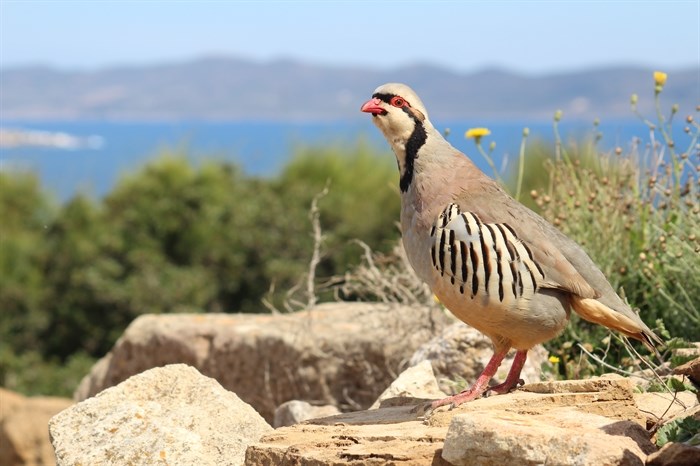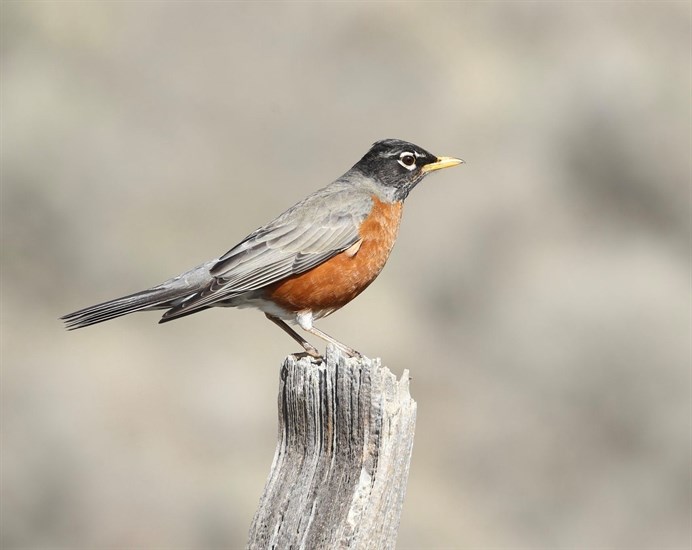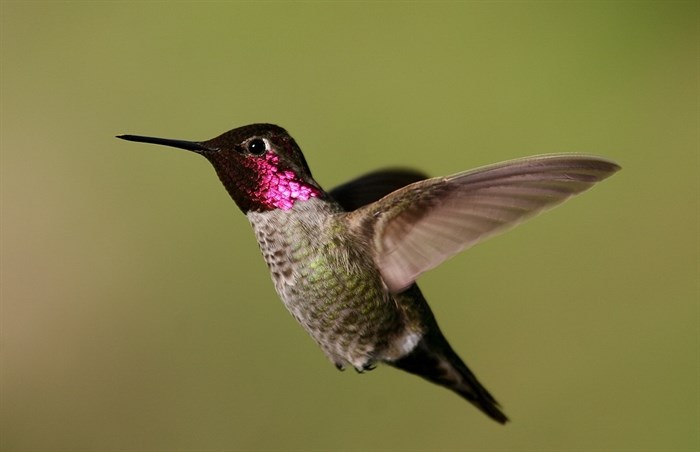
A ruffled grouse
Image Credit: FACEBOOK/Valerie Walsh
December 03, 2022 - 1:49 PM
Many birds of the Thompson-Okanagan fly south for the winter but there are some that brave the winter storms.
They tend to feast on nuts, berries and seeds throughout the winter months, said Kurtis Huston of the Kamloops Wild Birds Unlimited.
“The good thing about being in the Interior is there no shortage of amazing birds,” he said.
Trees and bushes with nuts and seeds are staples for birds in winter. Pine cone seeds are one of the more important parts of the Interior’s habitat for birds year-round.
In years where Conifer tree seed counts are low, bird populations tend to be spotted more because they rely more on feeders. This year the seed count is high, so it will likely be a quieter winter for certain species “but that being said there’s still plenty of species to look out for,” Huston said.

Curtis Zutz took this photo of a Bohemian Waxwing this morning, Dec. 23, 2020.
Image Credit: SUBMITTED/ Curtis Zutz
Bohemian waxwing
These birds are top of mind when Huston thinks of winter birds.
They nest further north during the year but in the winter they flock in large groups and travel to lower elevations in search of food. They can be seen flying in your neighbourhood in flocks up to 1,000 birds, searching for juniper berries and different types of fruit trees. There’s more eyes to search for food in large groups and less chance of them getting eaten by predators, he said.

FILE PHOTO - Chukar
Image Credit: Wikipedia Commons
Chukar
Found more in Kamloops, chukar are a game bird introduced from the Middle East and have thrived in the south facing hills of the Interior, “so you only see them in specific spots,” he said. They remain a popular game bird and often visit bird feeders of people who live near the grassland margins of the city, according to the Kamloops Naturalist Club.

Robin photographed by Lyn MacDonald.
Image Credit: Lyn MacDonald
American robin
American robins, a common staple on lawns, don’t actually migrate during the winter, Huston said. “But because they spend more time roosting in trees and less time in your yard, you're much less likely to see them. The number of robins present in the northern parts of the range varies each year with the local conditions,” according to All About Birds. They don’t just eat worms, they will also eat nuts and fruit.
Ruffed grouse
They're not a bird often seen at bird feeders but can find them in brushier areas, Huston said. The grouse is also harder to see with its camouflage feathers. Ruffed grouse can digest bitter, often toxic plants that many birds can’t handle, according to All About Birds.
Levels of defensive plant compounds in buds of quaking aspen, a major winter-time food source for ruffed grouse, reflect the cyclic rise and fall of grouse populations: they’re lowest when grouse densities are increasing, and highest when grouse densities decline.

FILE PHOTO - Anna's Hummingbird
Image Credit: Wikipedia Commons
Anna's hummingbird
“I don’t think people realize in the Interior we have a species of hummingbird that does not migrate,” Huston said. “They’re more prevalent in the Southern Interior, like Kelowna and more south areas… however the bird is documented as far as Alaska being non-migratory.”
Part of their adaptation to survive further north is because of the increased use of hummingbird feeders and ornamental flowers, they’ve been able to expand and survive through colder weather.
Researchers are inviting residents to take part in the annual Christmas bird count, a holiday tradition that has spread across North America.
Each November, birders interesting in participating in the count can sign up. From Dec. 15 to Jan. 5, tens of thousands of volunteers throughout the Americas brave snow, wind, or rain, and take part in the effort. More information on the bird count can be found on the National Audubon Society’s website.
READ MORE: Okanagan Christmas bird counts reveals surprises including hummingbirds
To contact a reporter for this story, email Carli Berry or call 250-864-7494 or email the editor. You can also submit photos, videos or news tips to the newsroom and be entered to win a monthly prize draw.
We welcome your comments and opinions on our stories but play nice. We won't censor or delete comments unless they contain off-topic statements or links, unnecessary vulgarity, false facts, spam or obviously fake profiles. If you have any concerns about what you see in comments, email the editor in the link above.
News from © iNFOnews, 2022